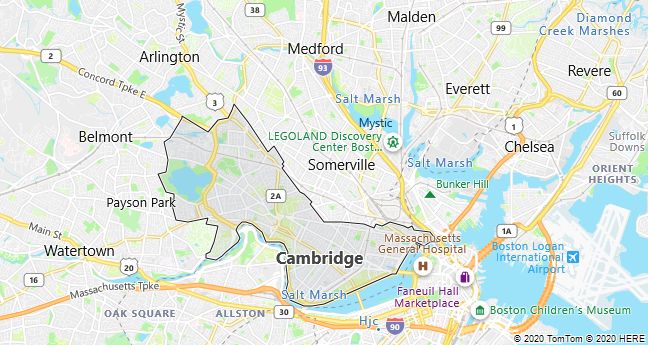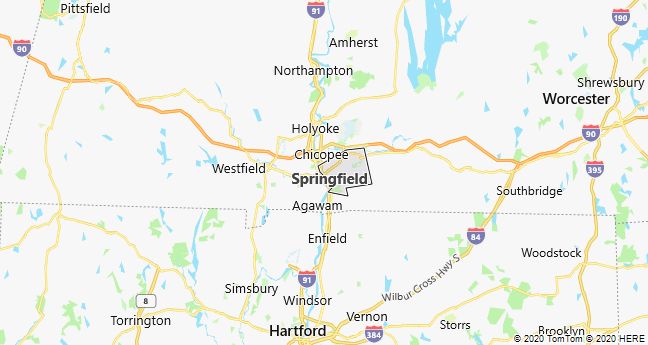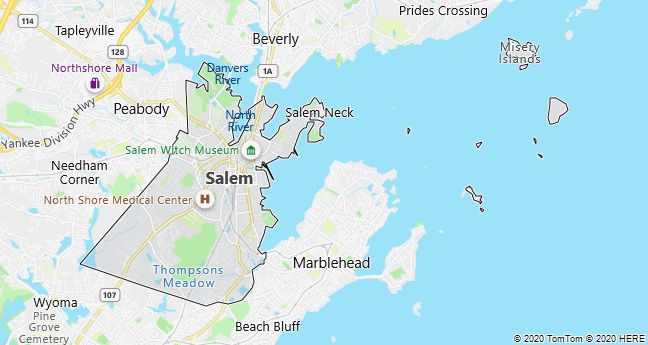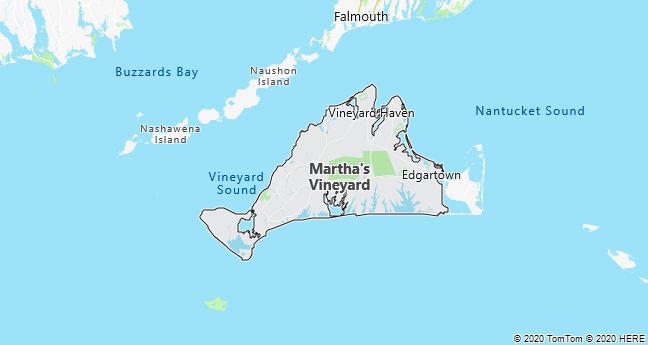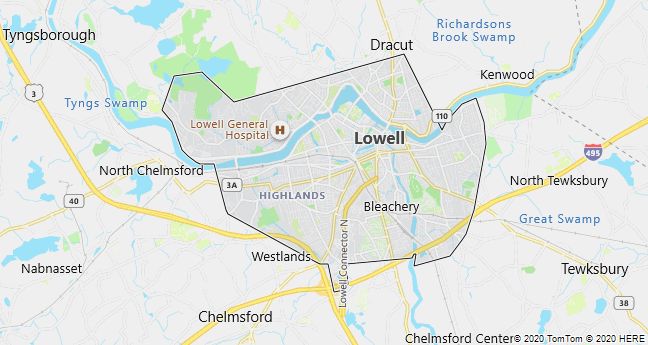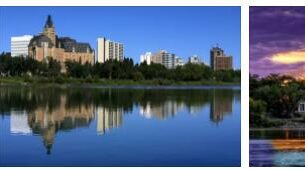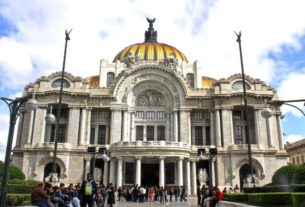Boston
Boston, capital of Massachusetts, USA; 617,600 residents (2010). Boston’s Old Town, downtown, on the Shawmut Peninsula in Massachusetts Bay, with its narrow, crooked streets and historic houses, has retained the colonial European feel. At the same time, the traffic, the metro stations, the modern shopping centers and the office buildings testify to a city that has undergone major changes, e.g. as a result of active urban planning since the 1950’s. The results include the beautifully restored Quincy Market, a new waterfront with a successful mix of housing, restaurants and museums, as well as a controversial redevelopment of the poor immigrant neighborhood of the West End. Slums are still found in the South End and in Roxbury, where the majority of Boston’s 26% of blacks live, while the neighborhoods around Boston Common Park, such as Beacon Hill and Back Bay, have high status.
The city center is the headquarters of the state administration and a large financial sector, while the industry is concentrated along highways on the outskirts of the city. The Route 128 ring road, nicknamed “The Electronics Highway”, has attracted many high-tech companies, which since the 1960’s have benefited from e.g. military orders as well as collaborations with Harvard University, the Massachusetts Institute of Technology and other of the city’s research centers.
The already large port turnover has grown further after converting to container traffic, and at Logan International Airport, the city has one of the busiest airports in the USA. In 1995, the city council, in collaboration with the state government, adopted a thorough traffic cleanup of the inner city. The project, which includes the largest tunnel works to date in the country’s history – hence the nickname The Big Dig – was completed in 2006. It has expanded the city’s already large network of subways, which with roots dating back to 1897 is America’s oldest.
The city has a large number of museums and historical monuments, an impressive Science Center and is home of the world-famous Boston Symphony Orchestra. The classic Boston Marathon was first held in 1897. 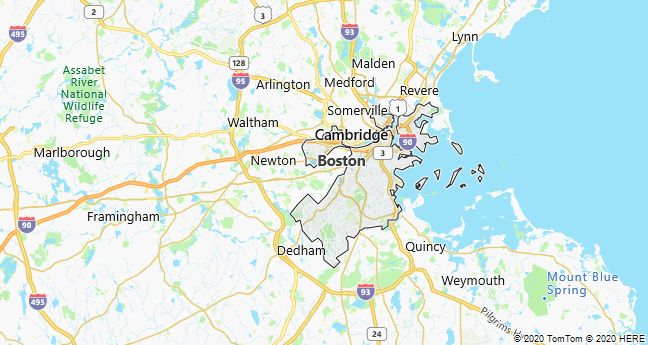
The Boston Ballet
is one of the most significant ballet companies in the United States. It was founded in 1964, and the repertoire consists of both modern and classical ballet. The company has strong threads for the Royal The ballet in Copenhagen, where its artistic director from 1985, Bruce Marks, was a solo dancer in the 1970’s, when he was married to Toni Lander. Bruce Marks left the post of artistic director in 1998 and was succeeded by Anna Marie Holmes (b. 1943), who served until 2001. In 2002, the Finnish Mikko Nissinen (b. 1962) was appointed to the post. A highlight in recent years was the first Soviet-American co-production, The Glasnost Swanlake (1990). Danish dancers, set designers and directors often visit The Boston Ballet.
History
Boston, under the leadership of John Winthrop, was laid out in 1630 by English Puritans who had emigrated from Boston and Lincolnshire. The location provided good opportunities for trade, and in the late 1600-t. Boston was the largest city in North America and one of the most important port cities in the British Empire. Tradition of political independence as well as economic strength made Boston a center of opposition to British colonial rule. The antagonisms intensified with the Boston Massacre in 1770, and the Boston Tea Party in 1773 as well as the Battle of Bunker Hill in 1775 were important steps toward independence.
After the American Revolution of 1775-83, Boston became a cultural and intellectual center, but independence also meant that the privilege of the British market lapsed. Boston therefore sought new markets and became the United States’ leading city in trade with China and India; the incipient industrialization along the Merrimack River simultaneously made it a shipping port for textiles. In the 1800’s. a great immigration took place; the population increased from 43,000 in 1820 to 560,000 in 1900, mainly due to Irish and Eastern European immigration, which gave the old Puritan stronghold a religiously and culturally more complex character, just as it created an important political bastion for the Democratic Party. At the same time, the city was increasingly dominated by a self-conscious upper class among the old families. Since approximately In 1850, Boston has thus been an industrial, economic and not least cultural center in the northeastern United States.
Bridgeport
Bridgeport, port city 100 km NE of New York City, Connecticut, USA; 144,200 residents (2010). The city’s versatile industrial development began with arms factories in the 1800’s, Colt, Winchester, Remington. Its most famous citizen is the former mayor and circus king PT Barnum, whose career is depicted in the notable Barnum Museum.
Cambridge
Cambridge (Massachusetts), a city near Boston, Massachusetts, USA; 105,200 residents (2010). Here is the oldest university in the United States, Harvard University (grdl. 1636), and one of the country’s most prominent research centers, the Massachusetts Institute of Technology (MIT) – in addition to high tech industries and other scientific institutes. Adjacent to Harvard are a number of libraries and museums with unique collections, including the Widener Library, the Peabody Museum and the Fogg Art Museum.
Fall River
Fall River, a port city in southern Massachusetts, USA; 88,900 residents (2010). After the construction of the first factory in 1811, it became one of the leading textile centers in the United States and became nationally known due to the trade union struggles of the workers, which was a driving force in the formation of the American Textile Workers’ Union in 1901. the city’s most important profession. 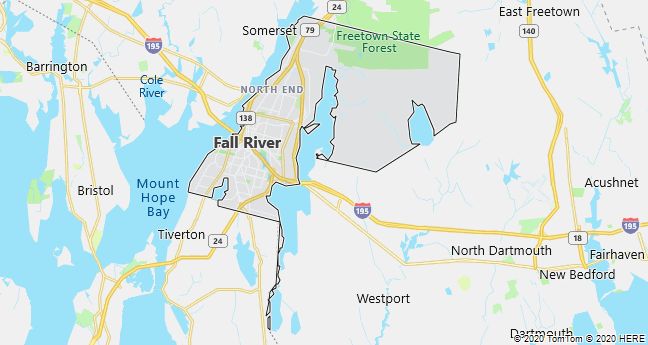
New Bedford
New Bedford, a port city west of Cape Cod in Massachusetts, USA; 95,100 residents (2010). In the 1800’s. for a number of years it was one of the world’s leading whaling towns and home to a large textile industry. Since World War II, it has had the influx of many new industries. From the harbor there is a ferry connection to the holiday island of Martha’s Vineyard.
Springfield
Springfield (Massachusetts), a town in Massachusetts, USA on the Connecticut River; 153,100 residents (2010). The city was home to the United States’ oldest weapons factory, the Springfield Armory, (especially rifles) in 1794-1968 and is also known for the invention of basketball (1891). Apart from the publishing house G & C Merriam Company (Merriam-Webster, Inc. (2000)), which has been producing dictionaries here since 1843, the city’s traditional industries have almost all disappeared and since the 1970’s have been replaced by electronics companies. The sights include the cultural center The Quadrangle, the Springfield Armory National Memorial and the Basketball Hall of Fame.
Salem
Salem (Massachusetts), a port city on the Atlantic Ocean in Massachusetts, USA, 30 km north of Boston; 41,300 residents (2010). The city is rich in historic houses and monuments from the maritime heyday of the 1700’s and 1800’s.
The Salem trials are the most talked about witch trials in American legal history. Accusations from approximately 20 people, especially young girls, in the city developed in the summer of 1692 into a witch hunt in which over 150 men and women were accused of witchcraft. One of the accused died under torture, and 19 people were convicted and hanged as witches before the trials in the autumn of 1692 ceased as abruptly as they had begun.
In Arthur Miller’s play Witch Hunt (1954), the Salem processes are linked to McCarthyism in the United States 1950-54.
Martha’s Vineyard
Martha’s Vineyard, island south of Cape Cod in the state of Massachusetts, USA; 226 km2, 15,000 residents (2010). Until a storm in 2007, the island was connected via a narrow isthmus to the neighboring island of Chappaquiddick; this island is generally considered to belong to Martha’s Vineyard.
Martha’s Vineyard is possibly named after a daughter of the English explorer Bartholomew Gosnold; the island was colonized in the 1600’s. and became known as the nearby Nantucket Island in the 1800’s. as a whaling base. Martha’s Vineyard is a popular summer holiday destination – the population increases to more than 75,000 in the summer. In addition, there are high cost of living and house prices, which has made the island a wealthy colony.
Lowell
Lowell, city of Massachusetts, USA; 105,500 residents (2010). Lowell was established as a center for textile production in 1820 where the Merrimack and Concord rivers converge in northern Massachusetts. The textile mills closed in the 1920’s, and it was not until the 1970’s that the city gained importance again, now in IT. The city has a rich cultural life, a large folk festival, and a textile production museum.

